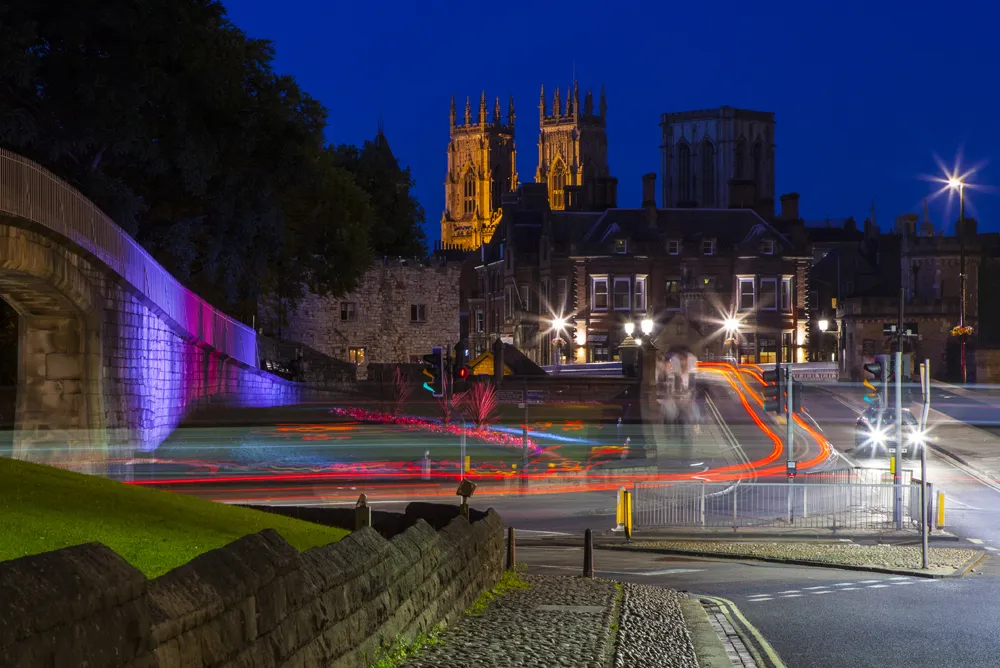Nine years after its opening, the 27-mile M6 toll motorway in the UK has had its video surveillance system upgraded in order to increase recording capacity and comply with changing data security requirements. The motorway bypasses the M6, one of the most congested pieces of road in Europe, which travels through Birmingham. Systems maintenance manager for operators Midland Expressway Limited (MEL), Paul Perry, explained why they decided to upgrade their system: “The existing Wavestore recording system has d
December 11, 2012
Read time: 3 mins
Nine years after its opening, the 27-mile M6 toll motorway in the UK has had its video surveillance system upgraded in order to increase recording capacity and comply with changing data security requirements.
The motorway bypasses the M6, one of the most congested pieces of road in Europe, which travels through Birmingham.
Systems maintenance manager for operators7003 Midland Expressway Limited (MEL), Paul Perry, explained why they decided to upgrade their system: “The existing Wavestore recording system has done everything we had expected of it but our requirements changed and the hardware was occasionally developing faults, although this was not a surprise as it had been in continuous use 24/7 for almost nine years.
“In particular we needed to comply with the Payment Card Industry Data Security Standard and this meant having the capability to simultaneously record and store video evidence of secure areas for 90 days. As a result we needed to invest in a substantial increase in the video surveillance system’s video storage capacity.”
MEL considered other options to replace the Wavestore system. “At the time we originally installed Wavestore, we were particularly impressed with the Wavestore GUI, which is simple to use and intuitive requiring little or no staff training” said Paul Parry. “Nine years is however a long time and particularly so when technology had been advancing at such a rapid rate. We therefore felt we should at least take a look at what other solutions were available.”
After considerable research, MEL decided to continue with a Wavestore solution, ordering larger capacity video servers, and the installation of an updated version of the Wavestore video management software. “Our research did not lead us to believe that any other manufacturer could do a better job and it was certainly a major advantage to stay with a system which our operators were happy working with and we were fully trained on. “At the time we originally installed Wavestore, we were particularly impressed with the Wavestore GUI, which is simple to use and intuitive requiring little or no staff training.
Images from over 100 cameras installed at six toll stations are stored on Wavestore servers and accessible at any time by operators in the MEL control room.
Wavestore digital video recording systems operate on the Linux system and can simultaneously record and display high quality images from analogue, network, HD, HD CCTV and infra-red cameras.
The motorway bypasses the M6, one of the most congested pieces of road in Europe, which travels through Birmingham.
Systems maintenance manager for operators
“In particular we needed to comply with the Payment Card Industry Data Security Standard and this meant having the capability to simultaneously record and store video evidence of secure areas for 90 days. As a result we needed to invest in a substantial increase in the video surveillance system’s video storage capacity.”
MEL considered other options to replace the Wavestore system. “At the time we originally installed Wavestore, we were particularly impressed with the Wavestore GUI, which is simple to use and intuitive requiring little or no staff training” said Paul Parry. “Nine years is however a long time and particularly so when technology had been advancing at such a rapid rate. We therefore felt we should at least take a look at what other solutions were available.”
After considerable research, MEL decided to continue with a Wavestore solution, ordering larger capacity video servers, and the installation of an updated version of the Wavestore video management software. “Our research did not lead us to believe that any other manufacturer could do a better job and it was certainly a major advantage to stay with a system which our operators were happy working with and we were fully trained on. “At the time we originally installed Wavestore, we were particularly impressed with the Wavestore GUI, which is simple to use and intuitive requiring little or no staff training.
Images from over 100 cameras installed at six toll stations are stored on Wavestore servers and accessible at any time by operators in the MEL control room.
Wavestore digital video recording systems operate on the Linux system and can simultaneously record and display high quality images from analogue, network, HD, HD CCTV and infra-red cameras.










